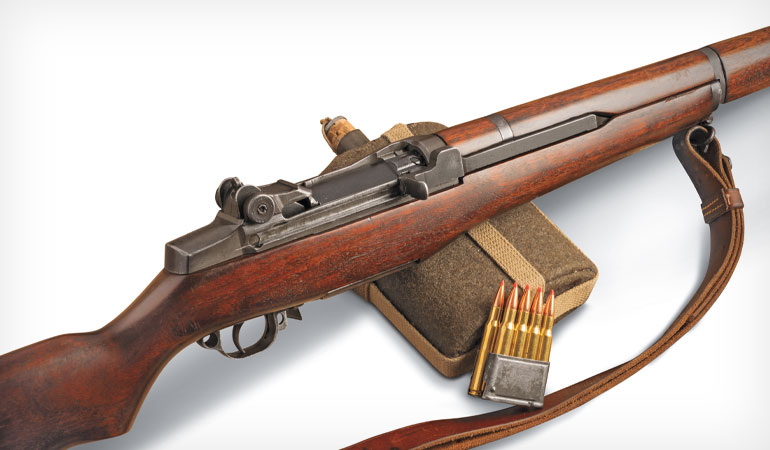
The M1 “Garand” rifle is objectively heavier than bolt-action rifles and specifically all those that fought in the war. But when you have the rifle in your hand, that weight translates into sturdiness. That is the feeling it conveys, that of a strong and robust weapon, not a heavy weapon. That perception is accentuated when shooting with it.
Then everything fits, because that weight and that robustness, which is a perception that you have a lot to do with the forceful design of the weapon and especially the shape of its butt/handle, is perfect to prevent recoil from dislodging you. You get the feeling of shooting a very balanced rifle and then the weight factor is diluted. I say all this by stating that I am by no means a regular shooter, nor an expert on the subject.
Regarding breakdowns, the M1 had some during the war. The biggest was in the design of the gas intake cylinder, which caused the firing cycle to be interrupted and forced it to be completely redesigned. In addition to that and others that I described in the article, which were solved very early on, there were others that came to light during the conflict and were solved along the way.
One of them was that the mounting lever, being integral with the piston, could break at a certain point after too much use. It was not serious at all, but it did mean that almost at the end of the war all field workshops received the order to make a small circular cut at the point where the piston rod joins the lever in all rifles. Received for any type of repair, in order to relieve the tension of the lever. This is why rifles where that cut is not present are somewhat rarer to find.
Another “illness” was that the firing cycle would sometimes stop when exposed to long periods in the rain. The solution was to give the soldiers very small bottles of a special oil called “Lubriplate” that had to be poured around the bolt to lubricate it and that completely solved the problem. The canisters were designed to be stored inside the buttplate of the rifle.
Another relatively notable “failure” was in the finish of the gas cylinder, located in the muzzle of the rifle. Being made of stainless steel, it could not be parked, but a special paint had to be applied. With use in combat conditions, the paint would peel off and the shine on the metal could give the soldier away. The solution was to create a new paint mix that was more durable than the old one.
Regarding the last question, the truth is that the feeling that I have after reading a lot of literature on the rifle is that there was never a very enthusiastic attempt to turn the M1 into a sniper rifle. I get the feeling that this position was well filled by the Springfield M1903 and that the Ordnance Department never made much of an effort to make the M1 its replacement.
Keep in mind that the power system of the M1 prevented putting a scope “as God intended”. I imagine that the sight that was placed on the M1C would not be very pleasing to an elite shooter due to its forced position and surely he had to make some additional correction to compensate for such a strange position. Consider that no M1 modified as a sniper rifle was shipped to Europe during the war. On the other hand, the standard M1 rifle was actually pretty accurate overall if it was in the right hands. No soldier complained that it was inaccurate in combat.
Johnson’s rifle was mechanically just as good as Garand’s, and had even more capacity. However, from what I’ve read, it was somewhat more complicated to mass-produce than the M1, which is another reason it was scrapped. It was also unclear whether it would have been reliable enough in the hands of an infantryman, as only elite troops used it in the war. There is no doubt about the behavior of the M1 Garand, which fulfilled perfectly and demonstrated its qualities and quality during two wars.
It is curious that, like other weapons of its time, the old M1 has continued in the gap, hitting shots to this day, as if it refused to die. That says a lot about its robustness and reliability. As an example, this photo of an M1 captured in Iraq, in the last war.